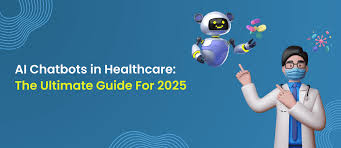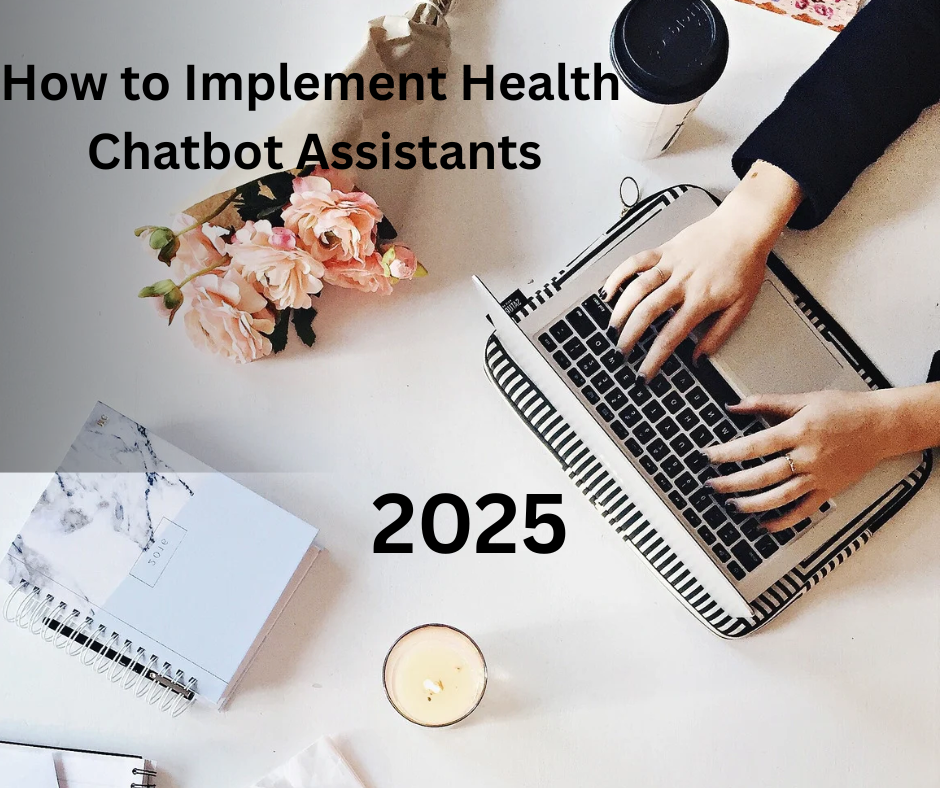Why Health Chatbot Assistants
Imagine yourself wide awake at three in the morning, searching for “weird rash on my arm” on Google, and getting sucked into a maelstrom of the worst-case scenarios. “Hey, can you describe that rash for me?” asks a calm, friendly health chatbot assistant. It indicates potential causes and whether you need a doctor in a matter of minutes. No need to panic—the crisis has been avoided! Healthcare chatbots are expected to save the sector $3.6 billion a year by improving access to care and simplifying tasks, according to Juniper Research.
Whether it’s seniors managing their prescriptions, parents balancing their children’s checkups, or teenagers tracking their fitness, these digital assistants are revolutionizing healthcare for all. When it comes to answering questions, scheduling appointments, or even adding a little humor to your day, health chatbot assistants are like carrying around a constant, witty nurse.
Defining Health Chatbots
AI-powered devices known as health chatbot assistants communicate with users to offer advice, reminders, or support pertaining to their health. Consider them your sidekick for digital health; they’re a mix of tech expert, nurse, and possibly comedian. These bots employ natural language processing (NLP) and artificial intelligence (AI) to provide precise, conversational responses that seem human, whether they are assisting you with mindfulness exercises or responding to inquiries about a bothersome cough.
Their Role in Healthcare
In the medical field, health chatbot assistants perform a variety of tasks. They provide mental health support, make appointments, remind people to take their medications, and triage symptoms. They simplify procedures and increase access to healthcare by integrating with platforms such as telehealth or electronic health records (EHRs). For instance, while maintaining a warm and approachable atmosphere, a chatbot could assist a user in scheduling a doctor’s appointment or reminding them to check their blood sugar.
Types of Health Chatbots
Not all health chatbot assistants are the same. Here’s a breakdown of the main types:
-
Informational Chatbots: Answer general health questions (e.g., “What causes migraines?”).
-
Triage Chatbots: Assess symptoms and suggest next steps (e.g., “See a doctor or rest?”).
-
Wellness Chatbots: Support mental health or lifestyle goals (e.g., meditation or diet tips).
-
Administrative Chatbots: Handle scheduling, billing, or reminders.
Key Technologies Behind Them
Modern technology is essential for health chatbots to function well. NLP enables them to comprehend human language, even if you type “tummy hurts” rather than “abdominal pain,” while AI drives their decision-making. Over time, they can get better thanks to machine learning, which learns from user interactions to deliver more effective responses.

Benefits of Health Chatbot Assistants
Round-the-Clock Support
Unlike doctors who need sleep (we hope!), health chatbot assistants are available 24/7. They answer questions, book appointments, or send reminders at any hour, making them perfect for night owls, new parents, or anyone with a midnight health scare.
Cost Savings for Providers
Healthcare providers spend big on administrative tasks like scheduling or answering FAQs. Health chatbot assistants automate these processes, cutting costs significantly. IBM reports that chatbots can reduce customer service expenses by up to 30%, freeing up budgets for better patient care.
Read more: What’s Next for Healthcare? Top Predictions for 2025
Personalized User Experiences
Health chatbots can tailor responses based on user data, like age, medical history, or preferences. For example, a teen might get tips on managing exam stress, while a senior receives reminders for heart meds. This personalization makes users feel seen and cared for, not just another number.
Improved Patient Engagement
Engaged patients are healthier patients. Health chatbot assistants boost engagement by offering timely reminders, educational content, and interactive tools. A 2023 Accenture study found that 70% of patients prefer digital tools for routine healthcare tasks, showing chatbots’ appeal across all age groups.
Scalability Across Audiences
Whether you’re a clinic serving thousands or an app targeting global users, health chatbot assistants scale effortlessly. They handle multiple conversations at once, ensuring everyone from teens to grandparents gets prompt, personalized support.
Steps to Implement Health Chatbots
Ready to bring health chatbot assistants to your practice, app, or website? Here’s a detailed, step-by-step roadmap to make it happen:
Set Clear Objectives
Start by defining what your chatbot should achieve. Want to reduce missed appointments? Provide symptom checks? Support mental health? Clear goals ensure your chatbot aligns with your mission. For example, a hospital might aim to cut no-show rates by 20%, while a wellness app focuses on daily user engagement.
Select the Best Platform
Choosing a platform is like picking the perfect coffee order—it depends on your needs. Popular options include:
-
Bot press: Open-source, customizable, and budget-friendly.
-
Dialog flow: Google’s NLP-powered platform for seamless conversations.
-
Microsoft Bot Framework: Enterprise-grade with robust integrations.
-
Chat fuel: No-code option for quick, simple setups.
Evaluate platforms based on scalability, cost, and integration with health systems.
Craft Conversational Flows
Your chatbot’s personality is its secret weapon. Design conversational flows that are clear, engaging, and human-like. Avoid robotic phrases like “Error: Input not recognized.” Instead, try, “Oops, I didn’t catch that—can you tell me more about how you’re feeling?” Add a sprinkle of humor to keep things light but professional.
Integrate with Health Systems
To maximize impact, integrate your health chatbot assistant with EHRs, telehealth platforms, or pharmacy systems. This allows real-time data access, like pulling a patient’s medical history or syncing appointments. Ensure integrations are secure and comply with regulations like HIPAA or GDPR.
Test, Launch, and Optimize
Before launching, test your chatbot with diverse users—teens, adults, seniors—to ensure it’s intuitive for all ages. Gather feedback, fix bugs, and tweak responses. After launch, use A/B testing to compare conversational flows and optimize performance. Analytics tools can track engagement and drop-off points.
Train Your Chatbot
A great health chatbot assistant learns over time. Use machine learning to train it on real user interactions, improving its ability to handle complex queries. For example, if users often ask about “stomach pain,” train the bot to recognize synonyms like “tummy ache” or “belly discomfort.”
Monitor Performance Metrics
Track key metrics like user satisfaction, response accuracy, and engagement rates. Tools like Google Analytics or platform-specific dashboards can help you measure success and identify areas for improvement. Regular monitoring ensures your chatbot stays effective and user-friendly.
Best Practices for Health Chatbots
Comply with HIPAA and GDPR
Health chatbot assistants handle sensitive data, so compliance with regulations like HIPAA (U.S.) or GDPR (Europe) is critical. Use encrypted servers, anonymize data, and partner with compliant vendors. A data breach can ruin your chatbot’s reputation faster than a bad Yelp review.
Focus on User Experience
A clunky chatbot is like a doctor with no bedside manners—nobody likes it. Design for accessibility with features like text-to-speech, large fonts, or voice input for seniors and visually impaired users. Keep language simple and inclusive for all ages.
Leverage Advanced NLP
Natural language processing (NLP) is the magic behind human-like health chatbot assistants. It helps them understand slang, typos, or vague queries like “I feel blah.” Platforms like Dialog flow or IBM Watson offer robust NLP tools to enhance conversational quality.
Regularly Update Content
Healthcare evolves, and so should your chatbot. Update its knowledge base with the latest medical guidelines, new symptoms, or treatment options. For example, during flu season, add prompts about vaccinations or symptoms to keep users informed.
Incorporate Multilingual Support
To reach diverse audiences, add multilingual capabilities. Health chatbot assistants that speak Spanish, Mandarin, or Hindi can serve global users or multicultural communities, ensuring inclusivity and broader reach.

Challenges in Health Chatbot Implementation
Navigating Data Privacy
Privacy is a top concern. A 2022 Pew Research study found 60% of users hesitate to share health data due to security fears. Address this with end-to-end encryption, transparent privacy policies, and opt-out options. Make users feel safe, not spied on.
Building User Trust
Convincing users to trust a health chatbot assistant over a human doctor is tricky. Build trust by citing credible sources (e.g., CDC, WHO), offering escalation to human staff, and ensuring accurate responses. For example, a bot might say, “Based on CDC guidelines, here’s what to do next—or want to talk to a nurse?”
Handling Complex Queries
Health chatbots excel at routine tasks but can stumble on complex medical questions. Design fallback options, like redirecting users to a doctor or reliable resources. For instance, if a user asks about a rare condition, the bot could respond, “That’s a tough one! Let’s connect you to a specialist.”
Ensuring Accessibility
Not all users are tech-savvy. Ensure your chatbot is easy to use for seniors, non-native speakers, or those with disabilities. Features like voice input, simple menus, and clear instructions make health chatbot assistants accessible to everyone.
Read more: How to build an AI mental health assistant with Momen(with 7 …
Case Studies: Health Chatbot Success
Let’s dive into real-world examples of health chatbot assistants making a difference:
|
Chatbot |
Use Case |
Impact |
|---|---|---|
|
Ada Health |
Symptom checker |
10M+ users, 25% fewer ER visits |
|
Woebot |
Mental health support |
80% engagement, 1M+ sessions |
|
Babylon Health |
Appointment booking & triage |
Saved 1M+ hours in wait time |
|
Your.MD |
Health advice & triage |
6M+ users, 30% faster triage |
Ada Health’s Symptom Checker
Ada Health’s chatbot uses AI to assess symptoms and suggest next steps, helping millions avoid unnecessary ER visits. Its user-friendly interface appeals to all ages, from teens to seniors, saving time and reducing healthcare costs.
Woe bat’s Mental Health Aid
Woe bot offers cognitive behavioral therapy (CBT) through chats, helping users manage anxiety or depression. Its empathetic tone and daily check-ins have an 80% engagement rate, making it a lifeline for mental health support.
Babylon Health’s Triage Bot
Babylon Health’s chatbot streamlines appointment booking and symptom triage, cutting wait times. It integrates with telehealth platforms, creating a seamless healthcare experience for users worldwide.
Your. MD’s Health Assistant
Your.MD provides personalized health advice and triage, guiding users to appropriate care. With over 6 million users, it’s reduced triage time by 30%, proving the power of health chatbot assistants.
Future of Health Chatbot Assistants
AI and Machine Learning Advances
The future of health chatbot assistants is exciting, with AI and machine learning driving smarter bots. Expect chatbots that predict needs, like suggesting flu shots based on local outbreak data, or offering tailored diet plans based on user habits.
Integration with Wearables
Health chatbots are syncing with wearables like Fitbits or Apple Watches. Imagine a chatbot analyzing your heart rate to recommend stress-relief exercises or alert you to irregularities, making proactive care a reality.
Voice-Enabled Chatbots
Voice-enabled health chatbot assistants are on the rise, allowing hands-free interaction. This is a game-changer for seniors or users with disabilities, making healthcare as easy as saying, “Hey, chatbot, check my symptoms!”
Read more: Best Cybersecurity Tips Everyone Should Know 2025
FAQs About Health Chatbot Assistants
1. What can health chatbot assistants do for users?
Health chatbot assistants answer health queries, schedule appointments, send reminders, and offer mental health support. They provide 24/7 access to care, making healthcare convenient and personalized for users of all ages, from teens to seniors.
2. Are health chatbots secure for sensitive data?
Yes, when built with HIPAA-compliant platforms and encryption, health chatbots are secure. Choose trusted vendors, verify privacy policies, and ensure data is anonymized to protect user information and maintain trust.
3. How do health chatbots enhance patient care?
Health chatbots improve care by reducing wait times, offering instant responses, and personalizing advice. They free up medical staff for complex tasks, boosting efficiency and patient satisfaction across diverse age groups.
4. Can health chatbots replace human doctors?
No, health chatbots assist with routine tasks like triage or reminders but can’t replace doctors. They escalate complex cases to professionals, ensuring accurate diagnoses while enhancing accessibility for users.
Conclusion: Launch Your Health Chatbot
The superheroes of contemporary healthcare, health chatbot assistants are constantly available, incredibly helpful, and prepared to simplify users’ lives of all ages. For clinics, apps, or wellness platforms, they are essential because they can reduce expenses and increase engagement. You can make a chatbot that is both efficient and enjoyable by establishing clear objectives, selecting the appropriate platform, creating interesting flows, and placing a high priority on compliance. Health chatbot assistants are here to stay, whether they’re reminding seniors about their medications or helping teens deal with stress. What is stopping you, then? To make healthcare more intelligent, entertaining, and accessible, start developing your chatbot right now! Leave a comment with your ideas for a chatbot.

